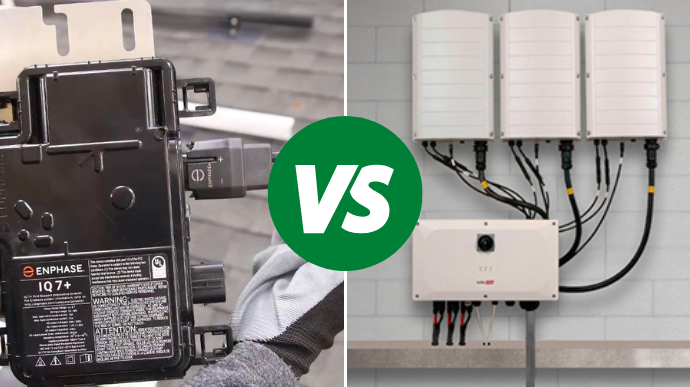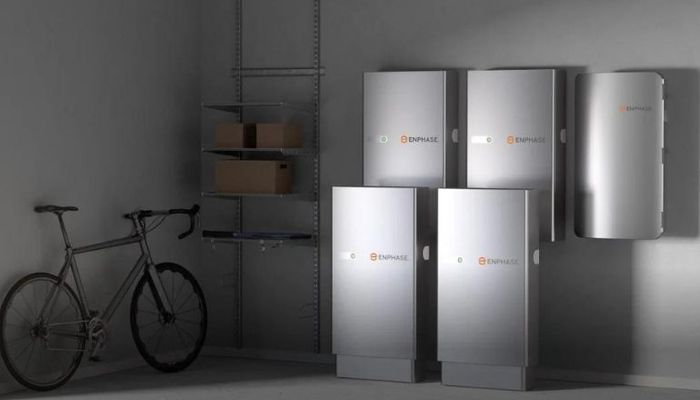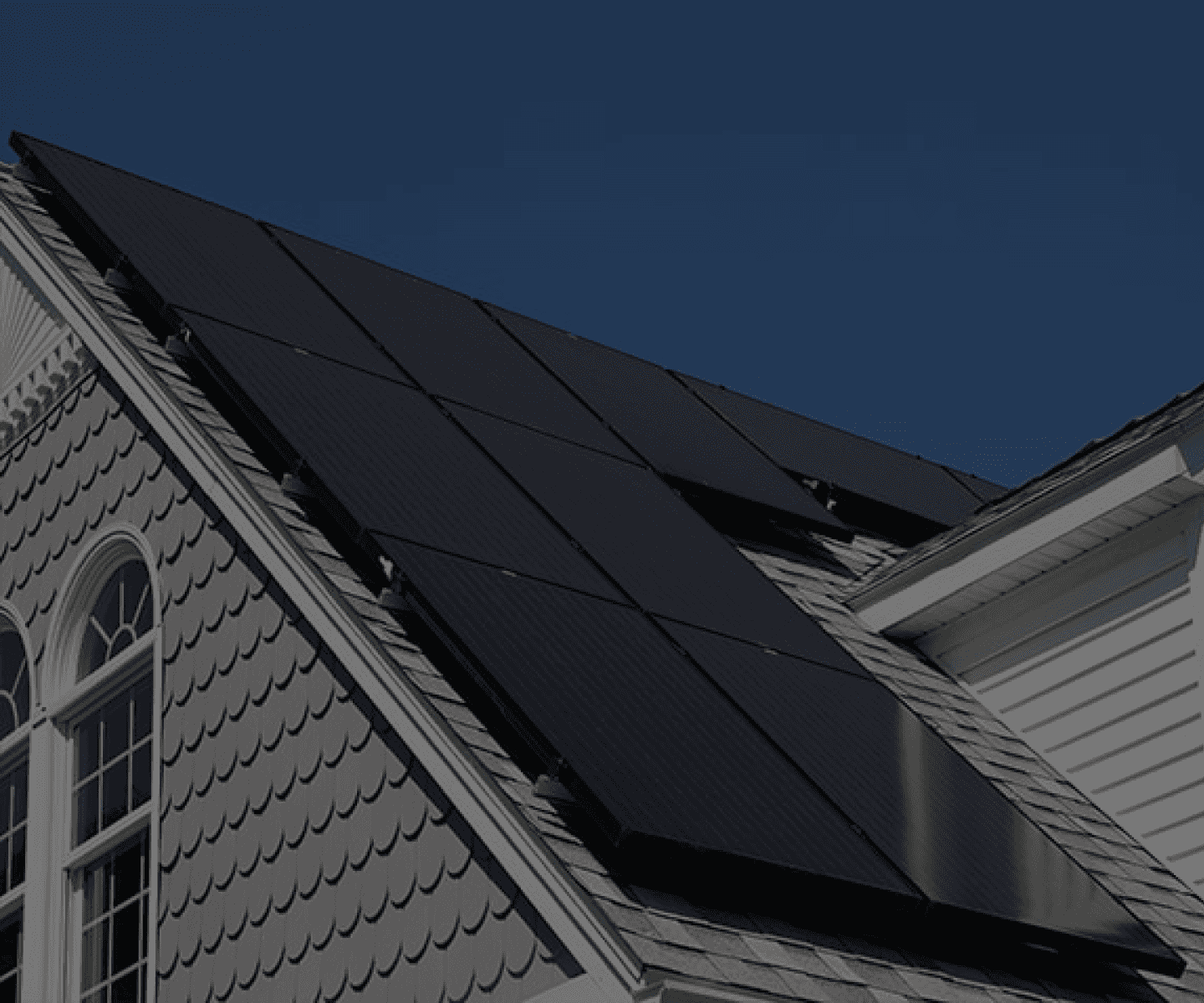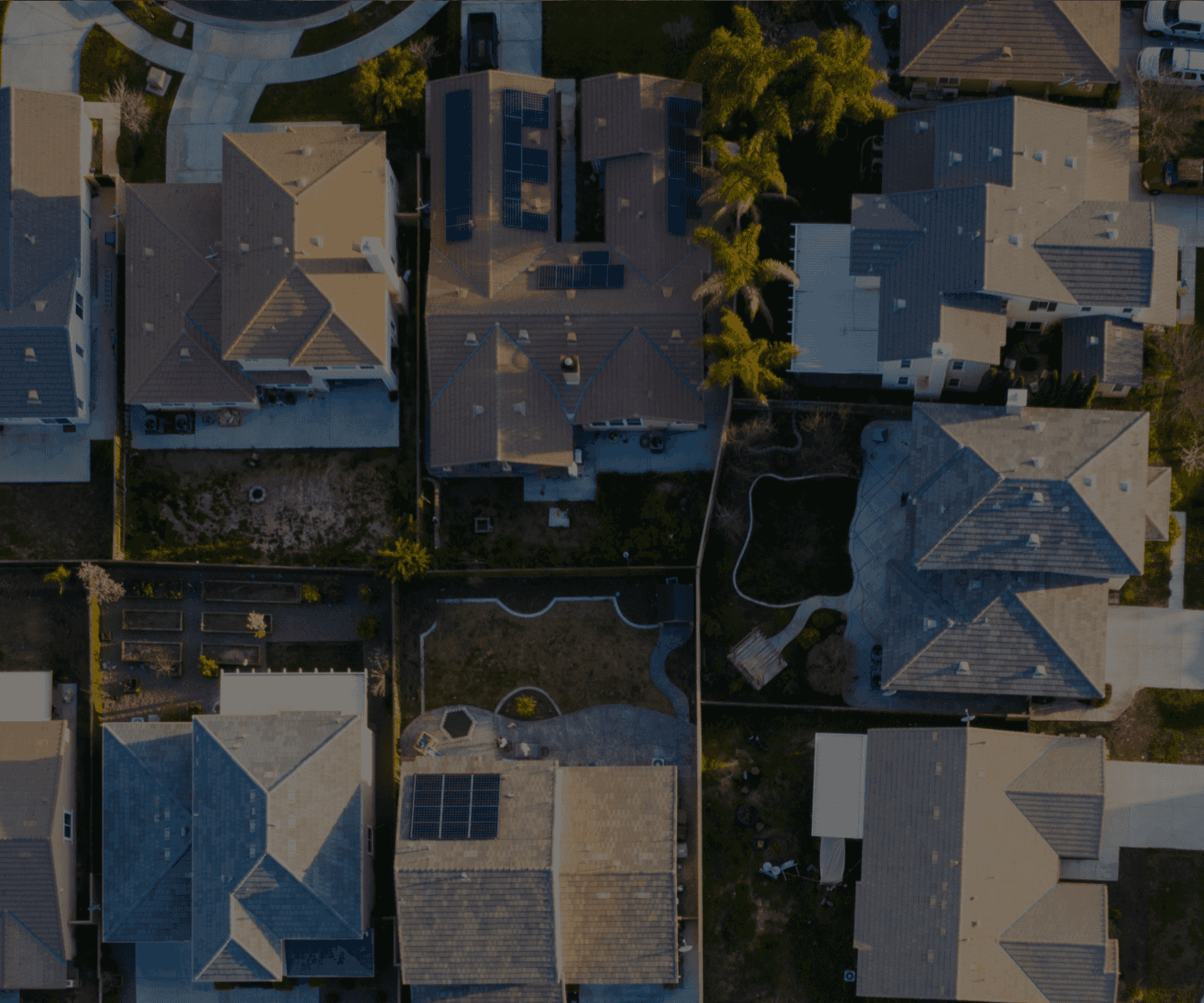SolarEdge Power Optimizer vs. Enphase Microinverter

The decision to install solar is an easy one. But once you’ve made that decision, there are other decisions down the line that might be a little harder to work through, like choosing the right type of inverter for your solar panel system.
This article will review the features and details of two of the most popular inverter options, SolarEdge and Enphase, to help you make an informed choice. Let’s get started.
Microinverters vs. PV Optimizers: A Quick Overview
As you shop for solar equipment, you’ll likely narrow down your inverter type to two options: microinverters or power (PV) optimizers. Here’s a brief rundown.
Read: 3 Types of Solar Inverters Explained
A Step Up From the String Inverter
Solar panels produce direct current (DC) electricity, but your home requires alternating current (AC) power. So, every solar installation needs an inverter (or inverters, plural) to convert the DC power from the solar panels into usable AC power.
For many years, central (string) inverters were the only option for grid-tied solar installations. One inverter would accept strings of solar panels wired in series. These inverters would also use Maximum Power Point Tracking (MPPT) technology to analyze the power coming from the solar panels and use that information to optimize the power output from the solar system.
But due to the nature of the wiring and reliance on one inverter, if one solar panel stopped producing due to shade or a malfunction, it would bring down the power output of all the other solar panels in the system.
Also, all the solar panels connected to a central inverter had to face the same direction, or the entire system would operate inefficiently, affecting the MPPT technology.
These issues hindered solar installations, so some inverter manufacturers developed module-level power electronics (MLPEs) like microinverters and DC optimizers. This new technology would prevent the inefficiency of one solar panel from affecting other panels in the system.
How Power Optimizers Work
DC power optimizers are devices that perform MPPT optimizing at the level of the individual panel (instead of for multiple strings of solar panels). Then the optimized DC power is fed to a central inverter that converts the DC to AC.
The most popular brand of power optimizers is SolarEdge. SolarEdge also makes the specialized central inverter that completes the system.
How Microinverters Work
As the name suggests, microinverters are small inverters that do the DC to AC conversion for individual solar panels. The most popular brand of microinverters is Enphase.
Next, we’ll compare SolarEdge vs. Enphase to help you decide which one is right for you.
Enphase vs. SolarEdge: Similarities
The Enphase microinverter systems and the SolarEdge power optimizers with inverter systems have many similarities:
- MPPT technology optimizes the output for individual solar panels and mitigates the effects of shade or mixed orientations on the overall solar production
- Monitoring information for each panel in your solar installation
- Solar battery options are available.
Enphase vs. SolarEdge: Differences
While both products feature impressive technology, there are several differences between these two inverters.
Cost
There is a cost difference between Enphase and SolarEdge, with Enphase being a little more expensive than SolarEdge.
However, Enphase microinverters make solar panel expansion easier, which is a big selling point. So if you are considering expanding your solar system in the future, the Enphase may be a worthwhile investment. More on this below.
Installation
Between Enphase and SolarEdge, solar panel installation is the same. No matter which system you choose, you must install an inverter under each panel.
Wiring will be different, however.
Because Enphase microinverters convert DC to AC on your roof, you will be running AC wires from the array. It can be as simple as running a Romex wire through your attic, just like any other AC power in your home.
But With SolarEdge, the wiring from the roof is still DC power, so you must use metal conduit inside until you reach the inverter (or a separately installed DC disconnect).
Additionally, with SolarEdge, you must install a central inverter. Enphase does not require a central inverter, but you will likely install an AC combiner subpanel to consolidate your branch circuits and have a convenient place to house the monitoring system.
Scalability
You may have to increase your electricity needs at some point. For example, if you purchase an electric vehicle or add members to your household, you’ll naturally use more power. Enphase’s modular system makes adding more capacity to your solar system easy.
With SolarEdge, increasing system size often means replacing the central inverter or adding a second one, which is inconvenient and less streamlined.
Aesthetics
Both the SolarEdge and Enphase systems will look the same on your roof. All you will see are your solar panels.
At ground level, you’ll see the inverter (for SolarEdge) or an AC combiner (for Enphase). You can install these components on an exterior wall, garage, basement or utility room.
Reliability
Enphase microinverters and SolarEdge power optimizers both have a 25-year warranty.
SolarEdge has a separate warranty on the central inverter, which is only 12 years. However, you can pay for additional time to bring your whole system up to a 25-year warranty.
Both Enphase and SolarEdge have an excellent reputation for a low failure rate and honoring their warranties in the rare case that something fails during the warranty period.
Efficiency
SolarEdge wins when it comes to efficiency with an overall system efficiency of about 98%, compared to Enphase’s 97% efficiency. All things considered, 1% isn’t a lot, but it does add up over the 25-year life of the system.
Settling the SolarEdge vs. Enphase Debate
In the end, you must weigh all the factors and differences to decide which inverter is best for your needs. There is no one-size-fits-all solution when it comes to home solar.
If you’re still unsure, get in touch with the experts at GoGreenSolar. Our seasoned solar veterans are here to help you design a custom solar panel kit for your home!






